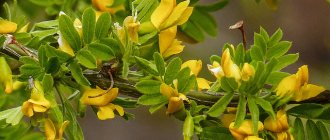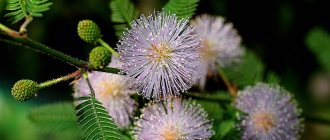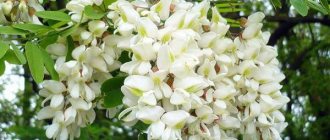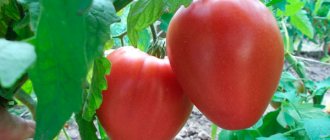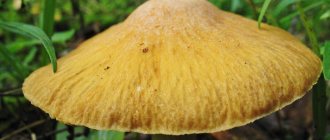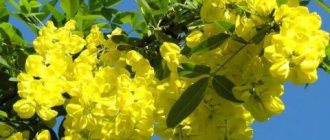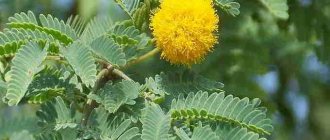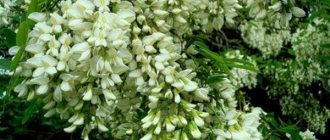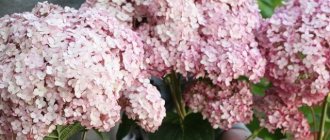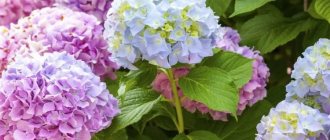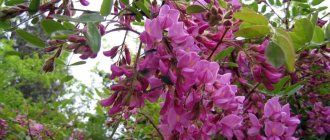In central Russia there are two tree-like shrubs, which are popularly called white and yellow acacia. Both of them are widely known, but neither one nor the other plant has any reason to be called that. True acacias belong to the Mimosa family, are heat-loving and grow in much more southern regions and countries all the way to Africa. One of the “impostors,” yellow acacia, is actually called caragana, and this plant is related to real acacia only by the similar structure of the leaves. Shrubby caragana sometimes does not even need planting - it is widespread everywhere and often grows on its own even in urban conditions. But in order to grow a neat decorative specimen, and for it to grow exactly where it is needed, you will have to make some efforts.
Botanical description
Caraganas are unpretentious perennial woody plants: summer-green shrubs or (rarely) small trees with pinnate or palmate leaves, consisting of 4-20 blades with smooth edges. They grow from 0.2 to 5 m in height (sometimes up to 7 m), often covered with spines.
In some species, the stems of fallen leaves are transformed into spines, in others - small spiny stipules.
Axillary flowers are solitary or collected in bunches of 2-5 pieces. The bracts are mostly awl-shaped. The calyx is tubular or bell-shaped, consisting of five fused sepals.
The flowers are white, lemon yellow, orange-brown, or reddish to purple in color and resemble the shape of a moth in flight (moth-type)—hence the name of the family.
The ovary is usually sessile and contains many ovules. After flowering, predominantly sessile, long, straw-colored fruits are formed.
The genus name Caragana comes from the Middle Turkic word qaraqan. The homeland of caraganas is Central and Eastern Asia. Some species were brought by people to Europe and North America.
Several representatives of the genus grow in the Russian Federation.
Most plants prefer regions with cold winters and dry, hot summers.
Caragana loves hot summers
Description and types of plants
The Caragana species consists of approximately 70 common varieties that have an attractive appearance. This culture grows in the forest-steppe regions of Siberia, the Far East and Russia. These trees are representatives of the Legume family. The leaves of the plant are golden or yellow in color. Many caraganas are excellent honey plants. Acacia honey has many beneficial properties.
Despite the many varieties of caragana , plant growers use only a few of them:
Tree-like. This is the most common variety of acacia. It grows up to 7 meters in height and produces single yellow flowers when flowering.- Pendula (weeping acacia). A very elegant and beautiful tree. It differs from other varieties in its crown, from which the branches hang in a very original way.
- Shrub. A small plant with yellowish or pale green bark. The trunk of the shrubby caragana tree is streaked along its entire length with narrow stripes.
- Dwarf. It is small in size. In the field of alternative medicine, the dwarf subspecies is used as an anti-inflammatory agent. To prepare tinctures, branches, flowers, roots, and even seeds of the crop are used.
- Prickly. The tree grows up to one and a half meters.
Each type has its own characteristics. But, in general, they are all unpretentious and very beautiful.
Tree caragana, or yellow acacia (lat. Caragana arborescens)
A highly branched, erect shrub, reaching a height of 4-6 m. Young shoots are at first pubescent, later smooth.
The bark is olive-green to brown in color, covered with spines up to 1 cm in size.
The pinnate leaves with subulate-shaped stipules are arranged alternately. Individual plates are yellowish-green, 1-2.5 cm long. Light yellow flowers up to 2.5 cm in size, single or collected in bunches of 3-5 pieces, appear in May and July . In their place, reddish bivalve pods up to 5 cm in size are formed, ripening in July.
The caragana tree shrub originally grew in an area that stretched from Manchuria in northeastern Asia all the way to Siberia.
In Europe and North America, where it is used as an ornamental plant, it is a neophyte.
Caragana tree
Weeping caragana, or pendula (lat. C. arborescens pendula)
It differs from other caraganas in its weeping crown shape. It has light green elliptical leaves and yellow flowers that bloom in May.
The height of an adult shrub is 1-3 m, and it does not change throughout its life.
Only the trunk thickens. Pendula looks beautiful in a planter on a balcony or terrace.
Karagana Pendula
Application of caragana
Caragana shrub is not a medicine. Therefore, the main purpose of planting this species on your site can be either decorative or the desire to strengthen the soil.
For therapeutic and prophylactic purposes, the leaves, bark and shoots of Caragana arborescens are most often used. Since the green mass is rich in vitamin C, carotene and fiber, it is most often used for allergic reactions and respiratory diseases. An infusion of dried caragana arborescens leaves is an excellent remedy for constantly tormenting heartburn. To do this, you need to pour two tablespoons of crushed leaf mass into a glass of boiling water and leave for three hours, then strain thoroughly and consume several times a day. A decoction of the bark of this type of caragana will be useful for people suffering from atherosclerosis.
Maned caragana (lat. C. jubata)
Outwardly, an inconspicuous branched shrub of irregular shape, 1-2 m high, which is popularly called camel's tail. The bark is dark brown, dark gray or grey-brown.
The branches are short and thick, densely covered with felt and leaf shafts that have turned into sharp thorns.
The leaves are pinnate, consisting of 8-12 blades 11-15 mm long. The flowers are solitary, white, reddish or yellow, appearing in June or July. The corolla is 2.5-3.9 cm wide. The fruits ripen in August-September.
Wild Caragana jubata is found in Kazakhstan, Tajikistan, Mongolia, China, Bhutan, Nepal, India and Russia, where it is distributed in Siberia, the Khabarovsk Territory and the Magadan Region.
Grows in mountain forests and other alpine areas at altitudes from 2400 to 4700 m.
Maned Caragana
Bush caragana, or Russian (lat. C. frutex)
A shrub up to 2 m high, sending out many shoots, from which brooms and brooms are made. Also known as dereza or chiliga. The branches are thin, brown, yellowish-gray or dark gray-green.
The leaves are palmate. Four leaflets 6-10 mm long and 3-5 mm wide, oblong-ovate-lanceolate, smooth or covered with small hairs, dark green on both sides.
The leaf petioles and stipules are covered with spines.
The flowers are bright yellow, solitary or grow together in 2-3 pieces. The corolla is 2.2 cm in size. The fruits are cylindrical, 2-3 cm long. Although the plant blooms beautifully from May to June, it is rarely used as an ornamental.
In the wild, Caragana frutex is distributed in Kazakhstan, Kyrgyzstan, the Chinese province of Xinjiang, Bulgaria, Romania, Moldova, Ukraine, and Russia.
On the territory of the Russian Federation, it grows in the republics of Dagestan and Karachay-Cherkessia, Krasnodar and Stavropol territories, as well as in Siberia. It prefers steppes and dry forests, “climbs” to heights from 1000 to 2500 m, and often forms dense thickets.
Caragana shrub (Russian)
Varieties of Caragana
In total, there are about seven dozen plant varieties in nature, of which about ten are suitable for cultivation in the climate of mid-latitude Russia. Let's look at some of them in a little more detail.
Maned caragana
One of the tallest species, rarely less than 1 m in height as an adult. The stem shoots are thick, the leaves grow directly from them, and have white pubescence. A year later, what remains are prickly, needle-shaped petioles. The flowers are white or pink, no longer than 4 cm.
Ussuri caragana
In the Ussuri variety, the bush, on the contrary, has a very compact size and rarely raises its branches above 1 m. The shoots are straight, ribbed in cross-section, and the leaves are dense. The flowering is colorful, at first the buds are yellow, and by the end of the budding period the flowers become almost red. Found wild in Russian Primorye.
Dwarf caragana
Another low bush, not exceeding a meter in height. It has a characteristically golden bark with a smooth, shiny structure. The shoots are thin, the leaf plates have a lighter shade compared to other varieties. Flowering is long and early, can last 4 months, i.e. almost until the end of summer.
Caragana prickly
Medium-sized bush up to one and a half meters high. The shoots are straight, short, the leaf blades are small, the central stem of the leaf branches has spines.
Caragana tree
This is precisely the variety that grows in abundance in mid-latitudes and which is popularly called yellow acacia. It is a very tall bush that turns into real trees up to 7 meters in height. The leaves have a lush green color, the flowers are painted yellow, the inflorescences are neat and bunch-shaped.
Caragana Pendula (weeping)
This is not a variety, but a separate variety, very interesting in that its shoots have an arched shape and effectively droop down, like those of a weeping willow.
Let's consider the principle of growing this plant on a site using the example of caragana shrub.
Caragana came to Europe from Russia, or more precisely, from the botanical garden in St. Petersburg, from where the first seedlings were exported to the West.
Caragana small-leaved (lat. C. microphylla)
A spreading shrub reaching a height of 2 or (rarely) 3 m. The branches are smooth or pubescent, covered with dark gray to dark green bark.
The pinnate leaves consist of 10-29 blades, the length of which is 3-10 mm. They are obovate or obovate-oblong, with a blunt or pointed end, smooth or covered with hairs.
Yellow tubular or bell-shaped flowers with a diameter of 2.5 cm. The pods are cylindrical, 2.5 cm long. Small-leaved caragana blooms from May to June, bears fruit from July to August.
Natural areas of distribution are in Mongolia, China and Russia, where Caragana microphylla grows in the Transbaikal region and the Republic of Tuva.
Caragana small-leaved
Caragana propagation
The available methods of propagation are the seed method, dividing the bush, planting root shoots, and planting with green cuttings. For decorative varieties, the grafting method is used, but more often seedlings of grafted varieties are purchased from a nursery.
The bushes should be divided and root shoots planted in early spring before sap flow begins. The green cuttings method is used relatively rarely; for this you need to wait until June.
Sowing of seeds is carried out immediately after collecting them (it is important to have time to collect them before the pods crack, but after waiting for almost complete ripening). You can also plant seeds in the spring, but in this case they require soaking for 1 day.
Young plants grown from seeds grow extremely slowly for the first two years, this is normal and there is no need to worry about this. From the third year of life they will quickly grow, and already at the age of 5 years they can reach 2 m in height. Almost immediately after this, the bush begins to bloom.
Ussuri caragana (lat. C. ussuriensis)
Another name is Siberian acacia. This is a thorny shrub, growing in height from 1 to 1.5 m. The branches are prickly, with gray-brown bark.
The leaves are shiny, fleshy, dark green in color, consisting of 2 pairs of closely spaced leaves measuring 2.5-3 cm.
The yellow flowers are very fragrant and bloom in May-June. The fruits grow closer to mid-August.
Regions of growth - China, Japan, Russia: Far East, Sakhalin Island, Khabarovsk and Primorsky Territories.
Ussuri caragana
Types and varieties of Caragana
All types of caragana are similar in decorative characteristics. The two most popular species in gardening are caragana shrub and caragana tree.
In beekeeping, yellow caragana has excellent honey-producing qualities. During the period of active flowering, fragrant, healing honey is collected from this shrub.
Caragana shrubby
Caragana shrubby
Places of germination - meadows and foothills of the Caucasus, Western Siberia, Altai, Central and South Asia, the European part of Russia.
It has other names - steppe chiliga, dereza. Grows no more than 2 meters. The branches forming the crown grow densely. The leaves have a light green tint, the leaf shape is complex, obovate, pinnate, quartered, reminiscent of a four-leaf clover.
Caragana bush blooms in May. Flowers up to 3 cm long, bright golden yellow, grow singly or in bunches of 2–3 pieces. Seeds are beans, naked, smooth, cylindrical. The buds are covered with a long spine, which is essentially part of the base of the leaf stalk.
It grows quickly with young root shoots, which is why dense thickets are formed in places where caragana shrubs grow. This quality is used when planting bushes on loose areas of land.
The variety is fast-growing, frost-resistant, moderately demanding on watering, light-loving, and takes root on any soil. Easily adapts to urban conditions. The bush bears fruit from the age of 5 years.
Propagated by self-sowing (seeds), cuttings, layering, and dividing the bush.
In gardening, they are used for planting in parks and creating hedges. A good honey plant.
Caragana dwarf
Caragana dwarf
The height of the bush is no higher than 1.5 meters, the crown is very dense. A characteristic feature is slow growth. It is most often found in the steppes, on rocky mountain slopes and in the valleys of mountain rivers in the Altai Territory.
The bark is brownish-yellow. Blooms throughout the summer with bright yellow flowers. Dwarf caragana bears fruit well. A winter-hardy species, unpretentious to the soil, capable of germinating even in sandy soils.
Ussuri caragana
Ussuri caragana
Caragana Ussuri is found mainly in forests, steppes and urban areas of the Khabarovsk and Primorsky Territories, in Northeast China.
The height is no more than 1.5 meters, the branches are smooth, gray-brown, with thorns. Young shoots are thin, straight, ribbed. The leaf has a complex shape, composed of two paired obverse wedge-shaped leaves up to 2.5-3 mm long. The leaves are fleshy, shiny, dense, dark green on top and lighter below, with a thorn at the site of germination.
The color of the flower at the beginning of flowering is light yellow, at the end it is orange-red. The flowers are solitary, large, up to 2 – 2.5 cm in length. The flowering period lasts about 15 – 20 days. The fruits are pointed, long, flat, pods up to 3 - 3.5 cm long.
Reproduction occurs by self-sowing (seeds), cuttings, and dividing the bush.
Winter-hardy variety, often used to create hedges. Calmly tolerates cutting and adjusting the height of the bush.
Caragana arborescens Walker
Caragana arborescens Walker
The species is of hybrid origin from the Caragana varieties Lorberga and Pendula.
Description of Caragana arborescens Walker: a low bush, spread out along the ground, with an elegant, openwork, umbrella-shaped crown with flowing branches. The height of the plant depends on the height of the stem to which the graft is made. The crown diameter can reach 2 - 2.5 m.
Flowers up to 2 cm long, single or in a bunch of 2–5 pieces. Caragana arborescens Walker begins to bloom after the leaves have fully opened - in early June. The leaves are complex, narrow, up to 10 cm in length, consisting of 4-7 pairs of leaves of a soft green color.
Does not tolerate excessive watering and waterlogged soil. Caragana Walker is a light-loving plant, unpretentious to the quality and composition of the soil. In gardening it is used as single plantings.
Maned Caragana
Maned Caragana
It can often be seen along river banks, on rocky mountain slopes, in forests of Siberia, Kamchatka, and the Kuril Islands.
A low-growing shrub, the height of which varies from 1 to 3 meters. The branches are thick, long, curved, saber-shaped, covered with thorns, which are essentially cuttings of dead leaves.
The leaves are complex in shape and have 4–6 pairs of leaves. The color of the leaves is green and dark green. The leaves are terry on the underside. The flowers are solitary, up to 4–5 cm in length, color varies from pink to white. A distinctive feature is that the calyx of the flower has dense, thin hairs. Flowering continues in June – July. At the beginning of autumn, the maned caragana produces seeds in the form of spherical beans with a thorn, with which it reproduces.
It is unpretentious to the soil and can germinate even in the highlands.
In gardening it is used to create hedges in urban park landscaping.
Caragana arborescens Pendula
Caragana arborescens Pendula
A type of tree caragana Pendula or weeping caragana prostrate. Leaves are of normal shape. Flowering time is May, the flowers are yellow and germinate in bunches. The bush is unpretentious to the soil, tolerates dense planting, requires light, but also gives good growth in shady places. Drought-resistant, watering requirements are average, and in wetlands the shrub wilts.
The type of Caragana Pendula is obtained by grafting onto seedlings of the natural type Caragana tree in a standard of 2.5 - 3 m.
Chemical composition
The aerial parts of caragana are rich in essential oils, sugars, glucoside caraganin, alkaloids, flavonoids, including quercetin, myricetin, isorhamnetin. Scientists have also discovered vitamin C, saponins, resins, tannins, various organic acids, and the yellow-orange pigment carotene. The study of the chemical composition continues.
Beneficial features
In folk medicine, different parts of plants are used: roots, leaves, bark. The roots of K. arborescens were used to make general tonics and preparations to combat an inflammatory female disease - endocervicitis.
Extracts from the leaves are present in combination medications intended for the treatment of urolithiasis (urolithiasis).
For many ailments, the plant is used. It has anti-inflammatory, hepatoprotective, antitumor, analgesic, and sedative properties.
Skin, gastrointestinal, and female diseases are treated with products prepared from it.
It helps with:
- hypertension,
- nervous disorders,
- tumors,
- toothache,
- liver cirrhosis and many other health problems.
Caragana has health benefits
Harmful properties, risks, contraindications
In the past, caragana tree seeds were fed to birds, and in times of famine they were eaten by people.
The German Federal Institute for Risk Assessment (abbr. German BfR) believes that this is unsafe, as it links the consumption of raw seeds with the occurrence of gastrointestinal problems in children.
The institution's staff sees the need for further research in this area.
The remaining parts of the plants contain a small amount of toxic substances and do not pose a danger to humans and animals.
The only known contraindications are individual intolerance.
Caragana contains some toxic substances
Medicinal properties
In folk medicine, all parts of Caragana arborescens are used to treat various diseases.
In alternative medicine, the use of caragana arborescens is used to treat:
- respiratory tract diseases (bronchitis, tonsillitis);
- skin diseases (allergies, diathesis, acne, boils);
- diseases of the digestive system (heartburn, stomach and duodenal ulcers);
- colds (flu, acute respiratory infections, stomatitis, laryngitis);
- joint diseases, arthritis, rheumatism, atherosclerosis;
- liver diseases;
- inflammation of the female organs (cervical erosion, metrorrhagia, leucorrhoea); hemorrhoids;
- diseases of the nervous system (headache, insomnia).
Tinctures and decoctions are prepared as medicinal preparations.
Yellow acacia honey
Beekeeping products - honey collected from yellow acacia, has an amber, light yellow color, a delicate aroma and a delicately sweet taste. A distinctive feature of yellow acacia honey is that it remains in a liquid state for a long time (about two years). It begins to crystallize later than all other types of honey.
Due to the early harvest, this honey is called “May”. Indicated for diseases such as:
- diabetes;
- avitaminosis;
- cataract, glaucoma, conjunctivitis;
- neuralgia, neuropsychological disorders, headache, insomnia;
- diseases of the gastrointestinal tract;
- gallbladder and kidney diseases;
- exhaustion, loss of strength.
Yellow acacia honey can have the following properties on the body:
- antiseptic;
- antimicrobial;
- anti-inflammatory;
- regulates blood sugar;
- sedatives;
- restorative.
Contraindications for the use of medicines based on Caragana
Any medicine, in addition to its beneficial qualities, has a number of side effects and contraindications.
When using infusions and decoctions based on Caragana, it is necessary to strictly observe precautions, not to exceed the permissible dose and time of administration, since during the flowering period the accumulation of a toxic substance - an alkaloid - occurs in all parts of the plant.
If safety measures are abused, consuming large quantities of seeds, decoction or infusion, it can lead to poisoning or even death.
In addition to the medicinal properties, Caragana is contraindicated for children, pregnant women, during breastfeeding, with individual intolerance, and with hypervitaminosis.
Growing Caragana arborescens
Shrubs are often used to provide protection from wind and prying eyes, prevent soil breakdown, form tall hedges, and create bee pastures.
They are often planted separately along roads.
Plants do not have any special requirements for planting and care; they prefer places from sunny to semi-shaded. They bloom poorly in the shade.
Planting seedlings
The best time for planting is early spring or late autumn. For caragana, any ordinary garden soil is suitable, possibly with a small clay content.
It is important that the soil is loose, dry and fresh, from acidic to alkaline, and not prone to stagnation of moisture, as the roots begin to rot. Shrubs grow well on light sandy and calcareous soils.
When planting, 15 g of fertilizer is added to the holes. A distance of 1.2 to 1.8 m is left between individual specimens. Having completed the work, the seedlings are watered, spending about 10 liters of water for each.
Caragana is best planted in early spring or late autumn
Sowing seeds
Seeds are sown in spring. First, they are filled with hot water, which after a minute is cooled to a temperature tolerable for the hands and left for 24 hours to swell.
A day later, the seeds are planted in the soil, which is filled with special containers.
The embedding depth is approximately 1 cm. A mineral sand substrate, flower coco soil or a mixture of perlite or sand and soil for seedlings is suitable.
The containers are placed in a warm and bright place, where the temperature is not lower than +25 ° C, and the substrate is constantly kept moist. Additionally, it can be heated.
After the first 2-4 leaves appear, the seedlings are transplanted into small pots. This is done very carefully so as not to damage the delicate, fragile roots.
It is best to leave caraganas in pots until next year as they are easier to care for then.
When the roots have grown through the holes in the bottom, the caraganas are transplanted into larger pots. They are planted in open ground next spring, from March to April, or in autumn, from September to November.
Caragana seeds
Watering, fertilizer
Water the plants during the growing season, but only after the top layer of soil has completely dried.
It is especially important to sufficiently water shrubs located in sunny places.
But all species are able to tolerate long dry periods. Specimens in tubs are watered regularly.
Caraganas are fertilized sparingly, always using natural rather than artificial fertilizers, which often contain salts and chlorine. Many shrubs cannot tolerate them. Long-acting fertilizers are suitable for caragana tubs.
Propagation by cuttings
A good time to take cuttings is the end of June. Usually, semi-lignified parts about 10-12 cm long are cut off with a sharp knife.
To minimize evaporation, remove leaves and flowers.
Since not every cutting produces roots, it makes sense to always use several.
Trimming
Old shrubs are pruned to make them more compact or to rejuvenate them. If desired, young ones can be pruned in winter to obtain a denser crown or increase branching.
Specimens that have grown too large can be greatly shortened in the spring, in March, to a height of 50 cm. The branches are cut above the branch, and not below it.
Old caraganas are rejuvenated for 3 years in a row, pruned by a third.
It is important to go evenly over the entire bush, and not limit yourself only to the outer side.
The branches are cut to a bud pointing outward.
Old bushes and plants need to be pruned in a timely manner
Reproduction
Yellow acacia propagates by seeds, green cuttings, layering and dividing the bush .
Propagation by seeds
Sowing in open ground is carried out in March-April , after soaking the seeds for 24 hours in cold water. As a rule, the seeds have good germination, and the sprouts have the viability characteristic of caragana. As they develop, they are seated in permanent places.
Propagation by green cuttings
Cuttings can be prepared during spring or summer pruning . It is useful to treat the lower sections with a root formation stimulator. The cuttings prepared in this way are planted in moderately moist soil. Rooting occurs within a month.
Reproduction by layering
In the spring, bend one of the lower, not old branches to the ground, fix the middle part of the branch, dig it in and water it moderately. By the beginning of next spring, the cuttings have taken root well and can be separated from the mother plant.
Reproduction by dividing the bush
As a rule, well-developing yellow acacia produces numerous rhizomatous shoots , which are separated in the spring , at the optimal planting time, and planted in separate holes at a distance of at least 50-70 cm from the mother bush.
Diseases, pests
Typically, representatives of the genus Caragana are little susceptible to diseases and pest damage. Infection with cinnabar nectria (ascomycete fungus), which causes the death of branches, is possible.
The fruiting bodies of the parasite are formed on branches that are damaged, dead or damaged by frost. Caraganas in hedgerows are especially vulnerable.
To prevent infection or severe spread of the disease, it is recommended:
- use a sharp cutting tool for pruning;
- remove charged parts;
- use a wound closing agent, especially for large injuries;
You also need to trim dry, diseased, frostbitten and broken branches to healthy wood.
Wintering
Caragana tolerates frost well and does not require protection. However, specimens in tubs cannot overwinter outside. They are brought into a room protected from frost, where the temperature ranges from 0 to +5 ° C. To avoid dropping leaves, keep the tubs in the dark. Water enough so that the earthen ball does not dry out completely.
Caragana tolerates cold well, but not those plants that overwinter in tubs
Procurement of raw materials
The aerial parts of caragana mane (leaves and twigs) are collected by hand in the spring during flowering or in the fall during wilting. The raw materials are dried in a dry, ventilated room or under a canopy, spread out on a clean cloth or paper.
When going to collect parts of Caragana jubata, keep in mind that it is listed in the red books of certain regions. It should be handled with care. It is prohibited to dig up a bush by its roots.
Summer green shrubs from the genus Caragana are interesting plants that are low maintenance and well suited for growing in the garden for a variety of purposes. Caraganas are mainly known as ornamental and reclamation perennials. K. mane is used as a medicinal plant. Medicines prepared from its roots or aerial parts help with many diseases.
X
Planting and care
Yellow acacia is an unpretentious plant to grow. She feels equally comfortable in brightly lit areas and in the shade, copes with severe frosts and can survive periods of drought. Planting and caring for caragana is not difficult; any gardener can do it. In the winter months, it can withstand air temperatures dropping to -45 °C, and in the summer - scorching heat. For planting, it can be given well-lit places in the garden that are unsuitable for planting other plants that may suffer from sunburn. They are not terrible for acacias.
With full compliance with agricultural technology, yellow stock is well accepted, gives annual growth and is highly decorative. Experts believe that planting yellow acacia is most effective in spring or autumn.
Yellow tree acacia is also undemanding to the soil. It tolerates a variety of soils, with the exception of waterlogged and highly acidic soils. Prefers areas with good drainage and the absence of groundwater lying near the surface. And the ideal option for American yellow locust is sandy loam soil.
Yellow acacia is not demanding regarding the regularity and abundance of watering. It can tolerate long dry periods. And stagnation of moisture is destructive for it. Therefore, you need to water the bushes no more than 3 times a week, approximately 12 liters of water for each bush. When determining the rate and amount of watering, it is worth focusing on weather conditions and the rate of evaporation of moisture from the soil surface.
Young yellow acacia seedlings need regular feeding. They can be applied from March to August, 2 times a week. You can feed the plant with solutions of mullein and chicken manure in a ratio of 1:50. Sometimes, to stimulate growth and development, caraganas plan to apply complex mineral fertilizer in the spring months.
Starting from the second year of life, the pea plant needs forced formation. Yellow acacia is pruned in the spring, before buds appear. In the summer, revitalizing pruning is carried out to rid the bush of damaged and old shoots. In winter, the trunks of young bushes are covered with burlap to protect them from the cold.
An adult acacia requires only pruning and timely watering. It rarely suffers from pests or diseases, so it should not be treated with special preparations for prevention.
